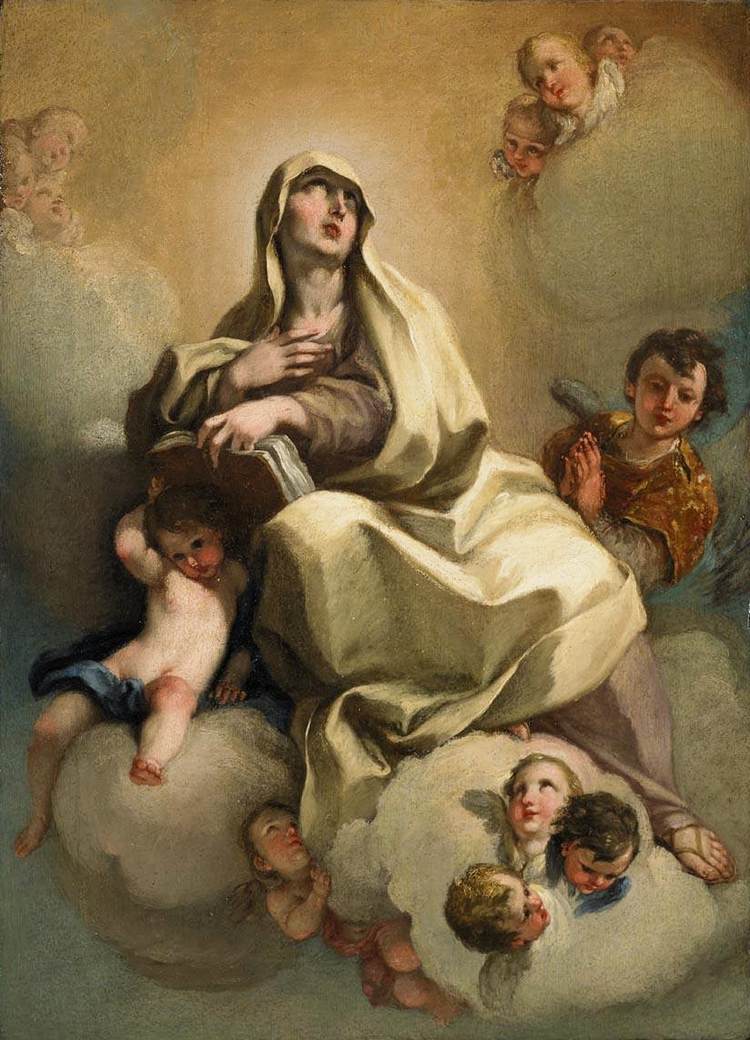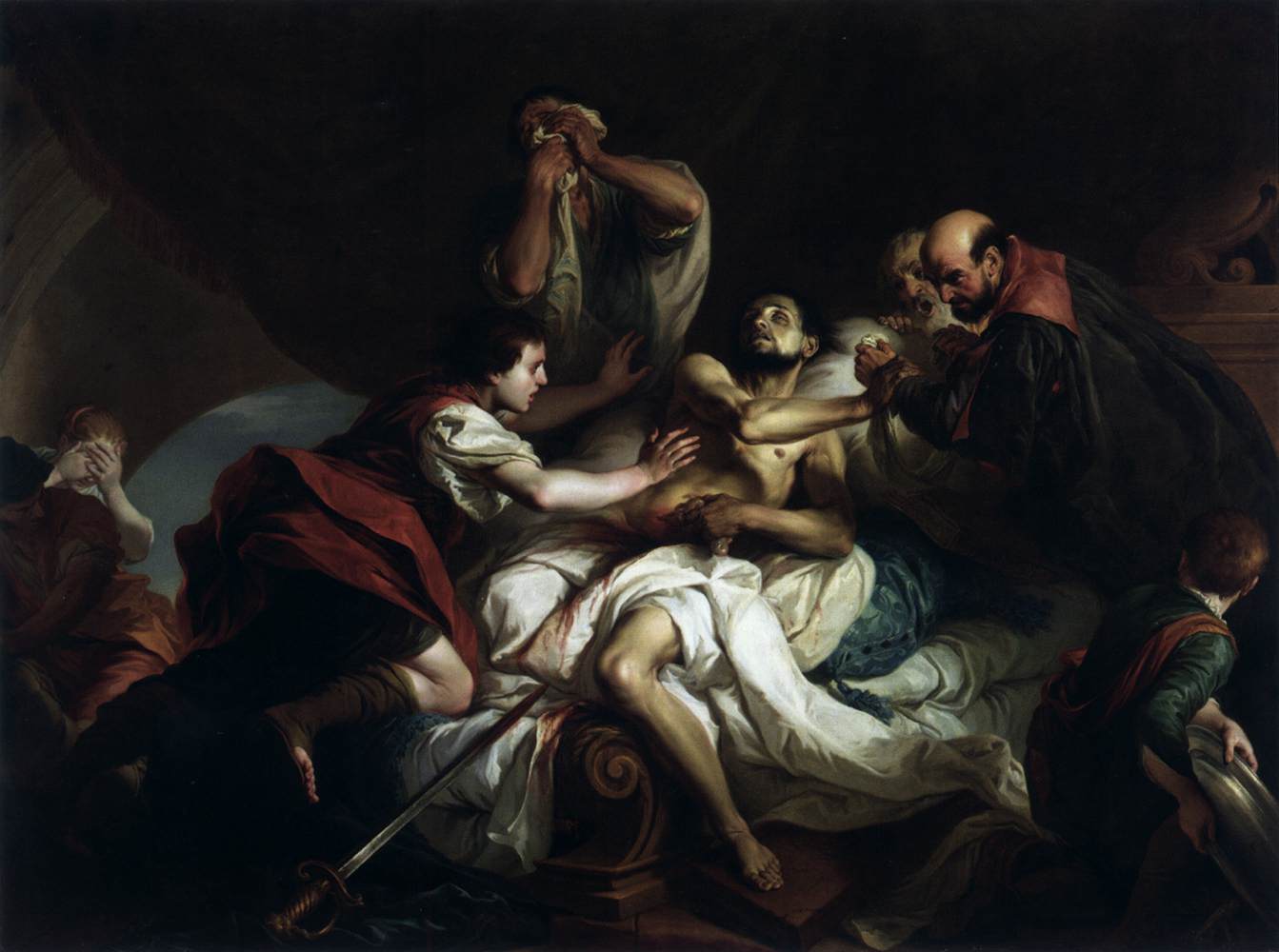By Anne Leader
Italian painter Giambettino Cignaroli was born on 4 July 1706 in Verona, where he spent his career and became the city’s leading painter in the Rococo era. Primarily a painter of religious scenes, Cignaroli became known for his spiritual images that included lively details such as frolicking cherubs. He was also interested in heroic themes and created a number of history paintings. Cignaroli traveled in the 1730s and ‘40s, working in Venice, Chioggia, Bergamo, and Brescia. By mid-century, his fame had spread beyond Italy’s borders, and his works were sought after by monarchs and elites from Spain, Northern Europe, and Russia. He was a prolific draftsman and was especially interested in anatomical studies, which he organized into three volumes now kept at the Ambrosiana library in Milan. Cignaroli helped establish Verona’s art academy – the Accademia Cignaroli di Pittura e Scultura – in 1766, when he was named Director for Life. Cignaroli also wrote poetry and history, including a series of biographies of Veronese painters similar to the lives of central Italian artists written two centuries before by Giorgio Vasari.
Reference: Susanne Juliane Warma. “Cignaroli, Giambettino.” Grove Art Online. Oxford Art Online. Oxford University Press.
St. Martha, oil on canvas. The Bowes Museum, Barnard Castle, County Durham
Madonna, oil on canvas. Private Collection
Self-portrait, 1758, oil on canvas. Kunsthistorisches Museum, Vienna
The Death of Socrates, 1762, oil on canvas. Szépművészeti Múzeum, Budapest
The Death of Cato, 1762, oil on canvas. Szépművészeti Múzeum, Budapest
Virgin and Child with Saints, 1759-62, oil on canvas. Museo del Prado, Madrid





